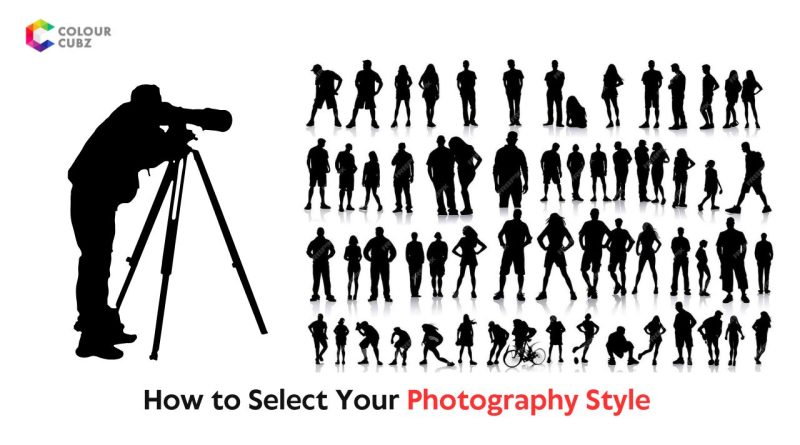How to Select Your Photography Style
Photography is an art form that speaks volumes through visuals, and your unique style sets you apart in a world full of talented photographers. Finding the right photography style can be challenging, but once discovered, it will not only enhance your work but help you connect with your audience. Whether you’re starting your photography journey or refining your craft, here’s an in-depth guide to help you choose the style that represents you.
Understand Your Interests
Choosing your photography style begins with understanding what excites you. What type of photography are you naturally drawn to? Ask yourself these questions:
- Do you enjoy photographing people or do you prefer capturing landscapes?
- Are you fascinated by the stillness of architecture, or do you prefer the movement and spontaneity of street photography?
- Is the focus on emotions and storytelling or capturing perfect, sharp details?
Your interests, passions, and experiences will give you a strong foundation in determining your style. For instance, if you’re passionate about nature and the outdoors, landscape or nature photography might be a natural fit. If you enjoy capturing authentic emotions and fleeting moments, documentary or portrait photography could be your calling.
Analyze Different Photography Styles
There are many different styles in photography, and each has its own characteristics that define it. Some common photography styles include:
- Portrait Photography: Focuses on capturing the personality and mood of an individual or group, often with controlled lighting and careful composition.
- Landscape Photography: Depicts vast outdoor scenes, showcasing nature’s beauty or the urban environment.
- Fashion Photography: Highlights clothing and accessories in visually appealing ways, typically involving elaborate lighting, poses, and styling.
- Street Photography: Captures candid, unposed moments of daily life in public spaces, often in raw and gritty black-and-white tones.
- Documentary Photography: Tells stories or provides information about events or cultures through images, often with a focus on authenticity.
- Fine Art Photography: Treats photography as a form of artistic expression, often with heavy post-processing to create dramatic or surreal effects.
Take time to research these styles and look at the works of renowned photographers within each category. Pay attention to the composition, color tones, and subjects. Ask yourself what kind of emotion you want to evoke in your work and what aesthetic appeals to you the most.
Experiment and Practice
Once you’ve identified a few styles that interest you, it’s time to experiment. This is where the fun begins! Testing different genres will help you understand which style feels most authentic.
Here’s how you can experiment:
- Try shooting in natural versus artificial light to see what fits your desired mood.
- Experiment with various lenses, from wide angles to telephoto, to explore different perspectives.
- Play with exposure and shutter speeds to achieve different effects, like motion blur or crisp details.
- Test black-and-white versus color photography to determine what resonates with your vision.
Don’t be afraid to step out of your comfort zone and try new things. The more you shoot, the more clarity you’ll gain about your preferences and the style that feels right for you.
Focus on Your Unique Perspective
Your photography style should reflect how you see the world. It’s about embracing your own voice and perspective.
Consider these aspects:
- Storytelling: How do you want to tell a story through your images? Are you looking to convey emotions, document reality, or create an atmosphere of mystery?
- Composition: What composition techniques are you naturally drawn to? Symmetry, leading lines, minimalism, or something more complex?
- Color Palette: Do you prefer muted tones, vibrant hues, or perhaps a more monochromatic feel? Your color choices can heavily influence the mood of your images.
- Lighting: Do you love the drama of harsh light and shadows, or do you prefer soft, diffused light? Your lighting choices will be central to your style.
Focus on the elements that align with your vision, and your unique perspective will naturally guide your style development.
Build Consistency in Your Work
Once you’ve honed in on the techniques and style that resonate with you, consistency becomes key. A recognizable style is one that remains cohesive across your portfolio.
- Editing Style: Consistent post-processing techniques, whether it’s a specific color grade or the use of certain filters, will help unify your work.
- Composition: Developing a signature approach to composition (such as framing subjects a certain way) can make your work easily identifiable.
- Tone & Mood: Whether you’re focusing on warm, inviting tones or cold, dramatic contrasts, your editing choices should reflect the overall mood you wish to convey.
Having a consistent style not only strengthens your brand as a photographer but also makes it easier for clients and audiences to recognize your work.
Don’t Be Afraid to Evolve
Your photography style may change as you grow and learn more. It’s essential to keep an open mind and be willing to evolve. Experiment with new techniques, explore emerging trends, and incorporate different aspects into your work.
Remember, your style doesn’t need to be rigid. As you explore new ideas, technologies, and trends, your style will adapt to reflect those changes. Don’t be afraid to try out new approaches that challenge your current vision. Growth and change are part of the artistic journey.
Get Feedback
Feedback from other photographers or mentors can be incredibly valuable in helping you fine-tune your style. Share your work with photography groups or online communities and be open to receiving constructive criticism.
Seek feedback on:
- Composition: Are your images visually appealing and well-balanced?
- Emotion: Does your work evoke the feelings you want to portray?
- Technical Quality: Are your images well-lit and in focus?
Constructive feedback will not only help you improve but also give you fresh perspectives on your work.
Conclusion
Selecting your photography style is a personal journey that combines experimentation, self-reflection, and practice. By understanding your interests, exploring different styles, focusing on your unique perspective, and continuously improving your skills, you’ll create a photography style that feels authentic and resonates with your audience.
Enhance Your Images with Our Unique Online Images Editing Platform
At ColourCubz, we provide an online platform that allows you to enhance your images effortlessly. Whether you’re looking to elevate your photos with professional retouching, precise color corrections, or creative manipulations, our platform offers a range of tools to meet your unique editing needs.
Our team of experienced editors works with a keen eye for detail, ensuring that your images reflect the style and quality you desire. From subtle adjustments to bold transformations, ColourCubz is here to make your photos stand out.
Experience the ease of editing your images online, tailored to your vision. Visit ColourCubz today and start enhancing your images with our expert editing services!

